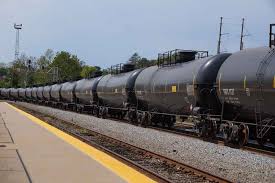
The shortage of pipelines to carry crude out of the Permian Basin has Union Pacific railroad executives seeing an opportunity for increased business.
It reportedly plans to move crude oil tankers to the region, as indicating by Chief Marketing Officer Beth Whited in an earnings webcast.
“The Permian is an interesting place and we’re definitely seeing some reduction in crude production due to the lack of pipelines,” she said. “We have some capacity in our network and expect to see some results in the third and fourth quarter.”
But how many more cars will UP move to the region and what volume will the company set for a target? She wouldn’t say.
But loading terminals in Texas and New Mexico have a 300,000 barrel a day capacity. And nearly 100,000 b/d can be used to load crude as the facilities serve the needs for frac sands.
At least one estimate projects growth in the Permian to reach 3.690 million barrels a day, resulting in producers looking to move their crude oil by rail and trucks because of the tight supply of pipelines.
A similar situation exists in the Western Canadian Sedimentary Basin where Canadian Pacific Railway plans to double the volume of crude it hauls to refineries in the U.S. Chief Marketing Officer John Brooks said recently the company is already hiring more staff and adding locomotives.
Just in the second quarter, Canadian Pacific moved 20,000 carloads or about 134,000 barrels of oil a day by operating 60 unit trains each month. But now the company sees the potential to increase the run rate to 266,000 b/d by late this year or early 2019.



